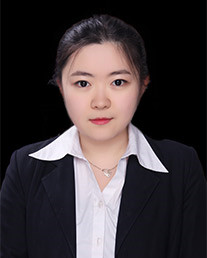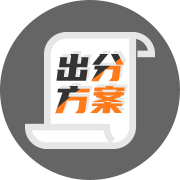

2018-03-06
栏目:考培资讯
lecture的并列型结构,一般是围绕某一个主题并列平行展开去讲解。这类结构没有之前我们见到的直线型结构那么好区分,因为他没有明显的表示时间地点人物的信号词,但是这种结构类型是我们TPO和考试中出现的比较多的结构类型。
之前我们介绍了lecture的并列型结构,一般是围绕某一个主题并列平行展开去讲解。这类结构没有之前我们见到的直线型结构那么好区分,因为他没有明显的表示时间地点人物的信号词,但是这种结构类型是我们TPO和考试中出现的比较多的结构类型。我们这次分析一篇按并列结构分层的一篇文章
今天我们以TPO13-L4为例,给大家讲解一下。
OK, I wanna go over the different types of meteorites, and what we've learned from them about the formation of Earth, and the solar system. Uh… the thing is what's especially interesting about meteorites is that they come from interplanetary space, but they consist of the same chemical elements that are in matter originating on Earth, just in different proportions. But that makes it easier to identify something as a meteorite, as opposed to…to just a terrestrial rock.
要注意文章一开始的地方就说出了今天的主题——meteorite。并且后面也一直在重复这个词。
So to talk about where meteorites come from, we need to talk about comets and asteroids, which basically...they’re basically made up of debris left over from the origin of the solar system 4.6 billion years ago.之后提出屏幕提示的信息comets and asteroids,帮助我们理解meteorite
Now I'm going a bit out of a order here…um…I'm not going to go into any depth on comets and asteroids now, but we'll come back later and do that. For now, I'll just cover some basic info about them.并且同是讲到两种不同的行星来进行对比,让我们清楚的理解这几个词之间的关系
Relatively near the sun, in the inner solar system, between Jupiter and Mars to be precise, we’ve got the asteroid belt, which contains about 90 percents of all asteroids orbiting the sun. These asteroids are…uh…like the terrestrial planets, in that they're composed mostly of rocky material and metals.
Far from the sun, in the outer solar system, beyond Jupiter's orbit, temperatures are low enough to permit ices to form out of water and…and out of gases like methane and carbon dioxide. Loose collections of these ices and small rocky particles form into comets. So comets are similar in composition to the gas giants.
Both comets and asteroids are...typically are smaller than planets. An even smaller type of interplanetary debris is the meteoroid. And it's from meteoroids that we get meteors and meteorites. "Roids" are, for the most part anyway, they are just smaller bits of asteroids and comets. When these bits enter Earth’s atmosphere, well, that makes them so special that they get a special name. They're called meteors. Most of them are very small, and they burn up soon after entering Earth’s atmosphere. The larger ones that make it through the atmosphere and hit the ground are called meteorites. So meteorites are the ones that actually make it through.之后紧接着讲到另一个屏幕提示词meteoroid,并且直接讲到这几个词直接的关系。之后回到一开始的主题词meteorite,并且开始具体将其分为三类:stones, stony irons and irons.
Now we've been finding meteorites on Earth for thousands of years, and we've analyzed enough of them to learn a lot about their composition, most come from asteroids, though a few may have come from comets. So essentially they are rocks, and like rocks, they're mixtures of minerals. They are generally classified into three broad categories--stones, stony irons and irons.
Stone meteorites, which we refer to simply as, uh, stones, are almost entirely rock material. They actually account for almost all of the meteorite material that falls to earth. But even so, it's rare to ever find one. I mean, it's easier to find an iron meteorite or a stony iron. Anyone guess why? Look at their names. What do you think iron meteorites consist of?文章最后的重点放在饿了Stone meteorites,并且就这个信息描述了两点:首先它是最多的陨石类型,其次,虽然数量很多但是我们确很难找到这种陨石,因为它的成分基本是石头
Mostly iron?
Yeah… iron and some nickel, both of which are metals. And, if you're trying to find metal?
Oh! Metal detectors!
Right, thank you. At least that's part of it. Stone meteorites, if they lie around exposed to the weather for a few years, well, they're made of rock, so they end up looking almost indistinguishable from common terrestrial rocks--ones that originated on earth. So it's hard to spot them by eye. But we can use metal detectors to help us find the others, and they're easier to spot by eye. So most of the meteorites in collections, uh, in museums, they'll be...they're iron meteorites, or the stony iron kind, even though they only make up about 5 percent of the meteorite material on the ground.

本科毕业于西安外国语大学英语专业,英语专业八级,硕士毕业于英国杜伦大学教育学专业,回国后从事出国考试英语教学工作4年;主要涉及雅思托福听力部分;熟悉考试模式题点,擅长通过提高考生的基础知识以及配合应试技巧来提高应试能力,提倡学生在通过正确的学习方式、习惯来全方面的提升英语水平,帮助学生提高成绩。
本文系新通教育独家稿件,版权为新通教育所有。欢迎转载,请务必保持原文完整,并注明作者和出处“新通教育网()”。谢谢!
 咨询时间:9:00-23:00
咨询时间:9:00-23:00 咨询时间:
咨询时间: